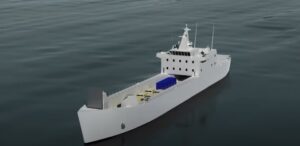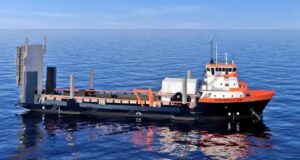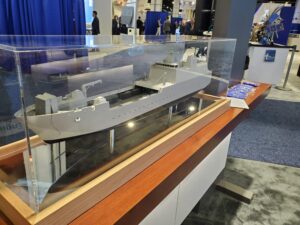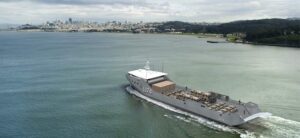Light Amphibious Warship (LAW)
-
 Navy/USMC
Navy/USMCMarines’ Force Design Update Pushes For LSM Amphibs, Third MLR To Be Operational Within Two Years
Marine Commandant Gen. David Berger’s last update to Force Design 2030 pushes for more new smaller amphibious ships while officials said the timeline for the units using such vessels are […]
Tagged in: -
 Navy/USMC
Navy/USMCBerger: Pentagon Acquisition Process Slowed Down LSM
The Commandant of the Marine Corps this week argued the Pentagon’s acquisition process has slowed down procurement of the new Landing Ship Medium (LSM) vessels and he favors modifying regulations […]
Tagged in: -
 Navy/USMC
Navy/USMCNavy Seeks Info From Potential LSM Amphib Builders, Wants Four Annually
The Navy is seeking industrial information from potential medium landing ship (LSM) producers on their ability to build the new ships, with a special interest of building up to four […]
Tagged in: -
 Navy/USMC
Navy/USMCMarine Corps Outlines Prototype Landing Ship Experiments
The Marine Corps Warfighting Lab (MCWL) is planning to start four stages of experimentation with the prototype landing ship this year, an official said last week. The Marine Corps has […]
Tagged in: -
 Navy/USMC
Navy/USMCMarine Corps Set To Start Testing Prototype Landing Ship In March
The Marine Corps Warfighting Lab plans to start experimenting with a prototype landing ship this month after making modifications to a commercial Offshore Support Vessel (OSV). The Marine Corps used […]
Tagged in: -
 Navy/USMC
Navy/USMCNavy And Marine Corps Compromised On Medium Amphibs Requirements And Will Go Into Contested Environments, Officials Say
Several Navy officials recently confirmed the Navy and Marine Corps compromised on designs for the new Landing Ship Medium (LSM) and laid out the upcoming schedule, but also said it […]
Tagged in: -
 Navy/USMC
Navy/USMCMarine Official Dismisses Medium Amphib Survivability Concerns
SAN DIEGO– A top Marine Corps official here this week dismissed concerns the services new Medium Landing Ships (LSM), formerly called the Light Amphibious Warship (LAW), are not survivable enough, […]
Tagged in: -
 Navy/USMC
Navy/USMCMarine Corps’ 35-Ship Medium Amphib Requirement Means Nine Per Regiment, Based On Space Needs
SAN DIEGO – Marine Corps officials here this week explained the service’s amphibious force requirements calls for 35 new Medium Landing Ships (LSM), formerly called the Light Amphibious Warship (LAW), based […]
Tagged in: -
 Navy/USMC
Navy/USMCLuria Says DoD Topline Process Blocking Bigger Navy
A top House Armed Services Committee member this week argued the Defense Department’s top line budget process that divides funding among the services constrains the ability of the Navy to […]
-
 Navy/USMC
Navy/USMCSmith Argues For LAW Capabilities And Explains Bridge Experimentation
The Assistant Commandant of the Marine Corps this week explained why the Light Amphibious Warship (LAW) capabilities are needed and what the service hopes to learn from experimenting with commercial […]
Tagged in:
